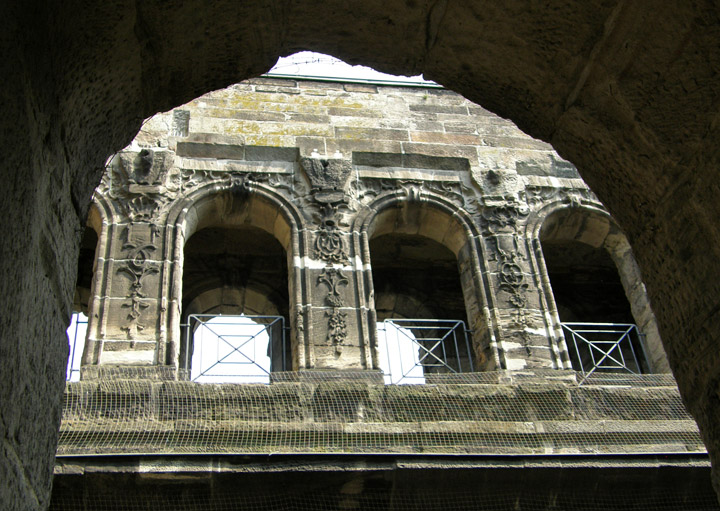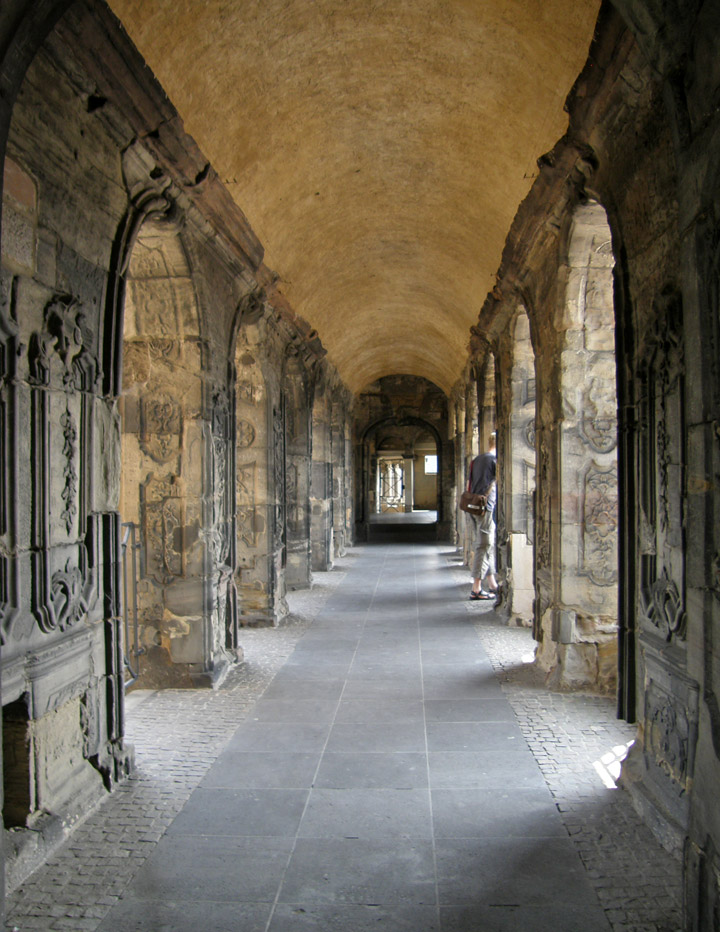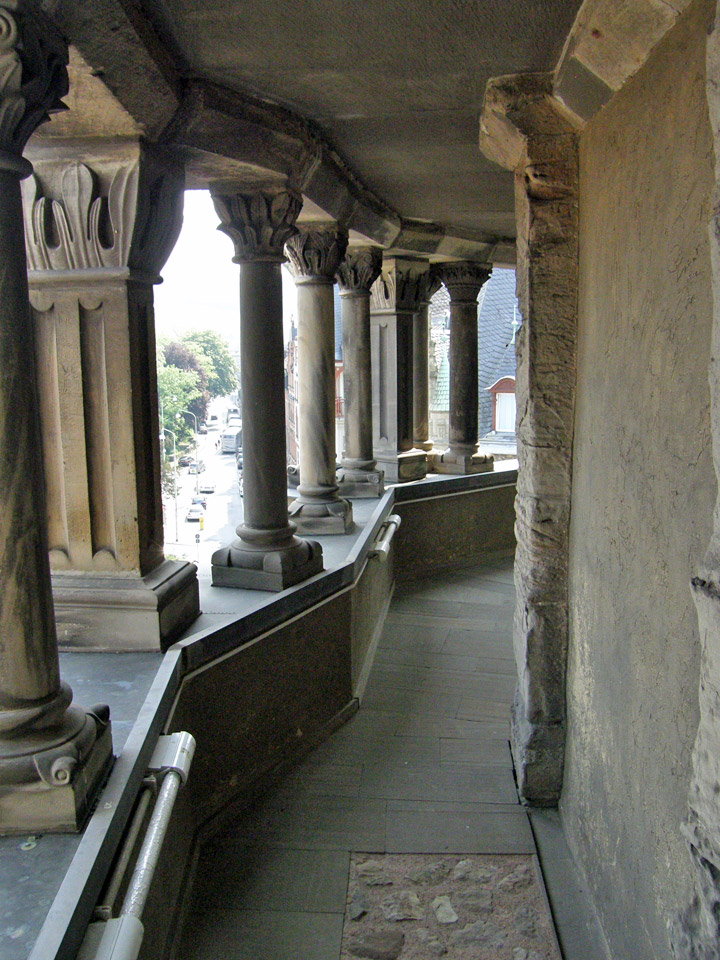

Porta Nigra
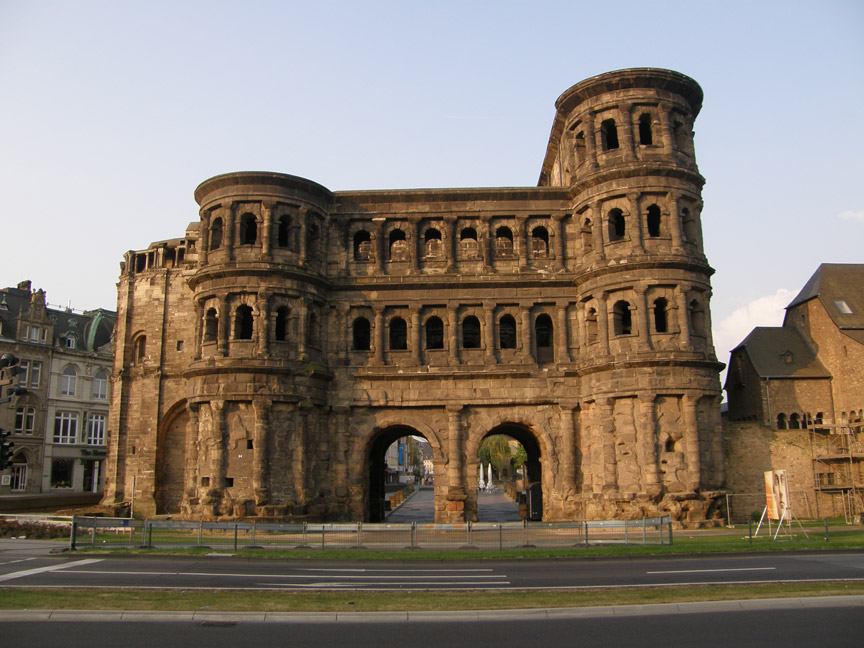
in the morning light
The Porta Nigra (Latin: black gate) is a large Roman city gate in Trier, Germany. It is today the largest Roman city gate north of the Alps and has been designated a World Heritage Site.
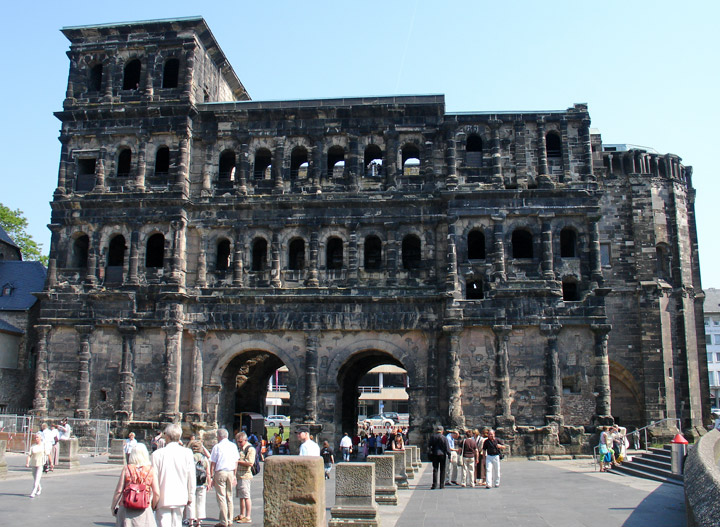
looking black in the afternoon light
The name Porta Nigra originated in the Middle Ages due to the darkened color of its stone; the original Roman name has not been preserved. Locals commonly refer to the Porta Nigra simply as Porta.
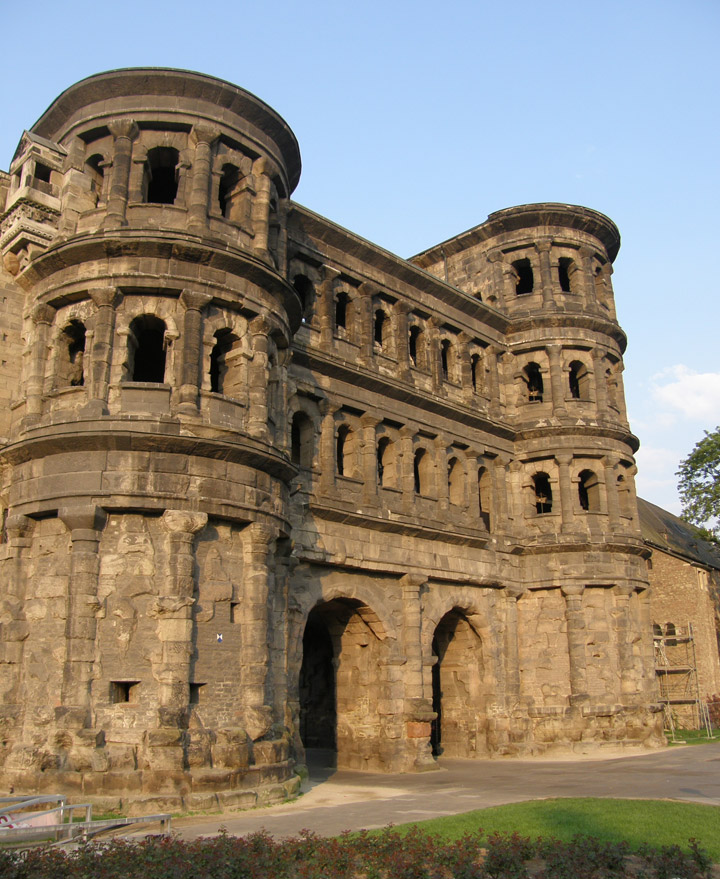
The Porta Nigra was built in grey sandstone between 180 and 200 AD. The original
gate consisted of two four-storied towers, projecting as near semi-circles on
the outer side. A narrow courtyard separated the two gate openings on either
side. For unknown reasons, however, the construction of the gate remained
unfinished. For example, the stones at the northern (outer) side of the gate
were never abraded, and the protruding stones would have made it impossible to
install movable gates. Nonetheless, the gate was used for several centuries
until the end of the Roman era in Trier.

In Roman times, the Porta Nigra was part of a system of four city gates, one of
which stood at each side of the roughly rectangular Roman city. The Porta Nigra
guarded the northern entry to the Roman city, while the Porta Alba (White Gate)
was built in the east, the Porta Media (Middle Gate) in the south, and the Porta
Inclyta (Famous Gate) in the west, next to the Roman Bridge crossing the Moselle
River. The gates stood at the ends of the two main streets of the Roman Trier,
one of which led north-south and the other east-west. Of these gates, only the
Porta Nigra still exists today.
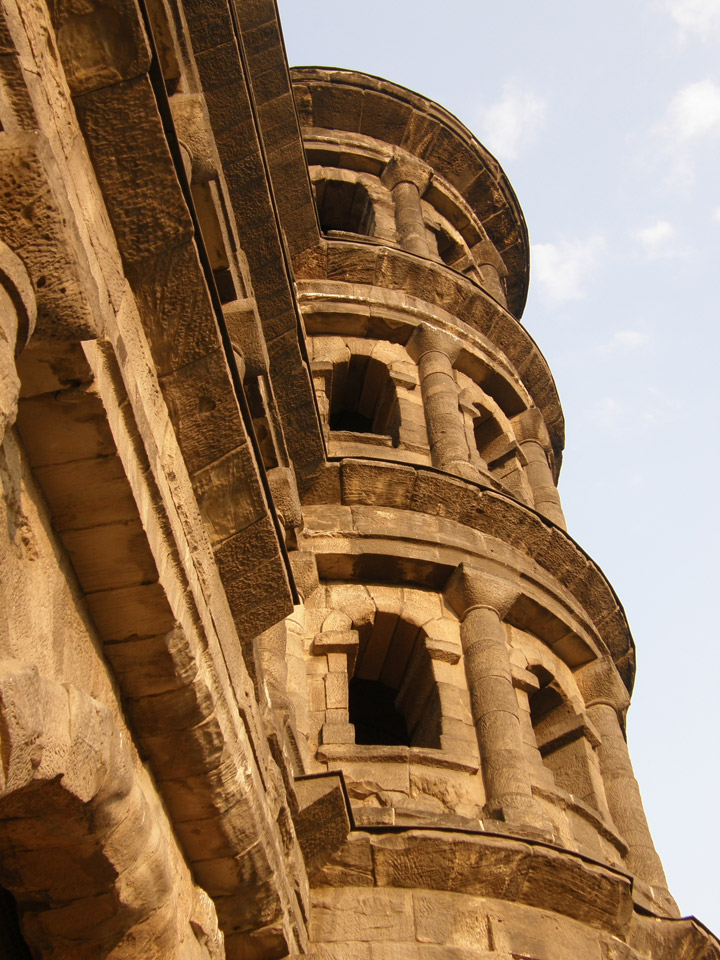
In the early Middle Ages, the Roman city gates were not used anymore in their
original function, and their stones were taken and reused for other buildings.
In addition, iron and lead braces were broken out of the walls of the Porta
Nigra for reuse. Today, traces of this destruction are still clearly visible on
the north side of the gate.

stairway to the upper levels
After 1028, the Greek monk Simeon lived as a hermit in the ruins of the Porta Nigra. Subsequent to his death (1035) and sanctification, the monastery Simeonstift was built next to the Porta Nigra to honor him. Saving it from further destruction, the Porta Nigra was transformed into a church: The inner court of the gate was roofed and intermediate ceilings were inserted. The two middle storeys of the former gate were converted into church rooms (naves), with the upper storey being used for the monks, and the lower storey for the general public. The ground floor with the large gates was sealed, and a large outside staircase was constructed alongside the south side (the town side) of the gate, up to the lower storey of the church. A small staircase led further up to the upper storey. The church rooms were accessible through former windows of the western tower of the Porta Nigra that were enlarged to become entrance doors (still visible today). The top floor of the western tower was used as church tower, the eastern tower was leveled, and an apse added at its east side. An additional gate - the much smaller Simeon Gate - was built adjacent to the East side of the Porta Nigra and served as a city gate in medieval times.

Along with the vast majority of Trier's numerous churches and monasteries, the
church in the Porta Nigra and the monastery at its side were dissolved by
Napoleon Bonaparte in 1802. During his visit to Trier in 1804, Napoleon ordered
that the Porta Nigra should be converted back to its Roman form. Only the apse
was kept, and the eastern tower not rebuilt to its original height. Local legend
has it that Napoleon originally even wanted to completely tear down the church;
allegedly, locals convinced him that the church had actually been a Gallic
festival hall before being turned into a church (in another version, they simply
told him about its Roman origins); it is claimed that this prevented the
destruction of the building and persuaded Napoleon instead to convert the gate
back to its original form.
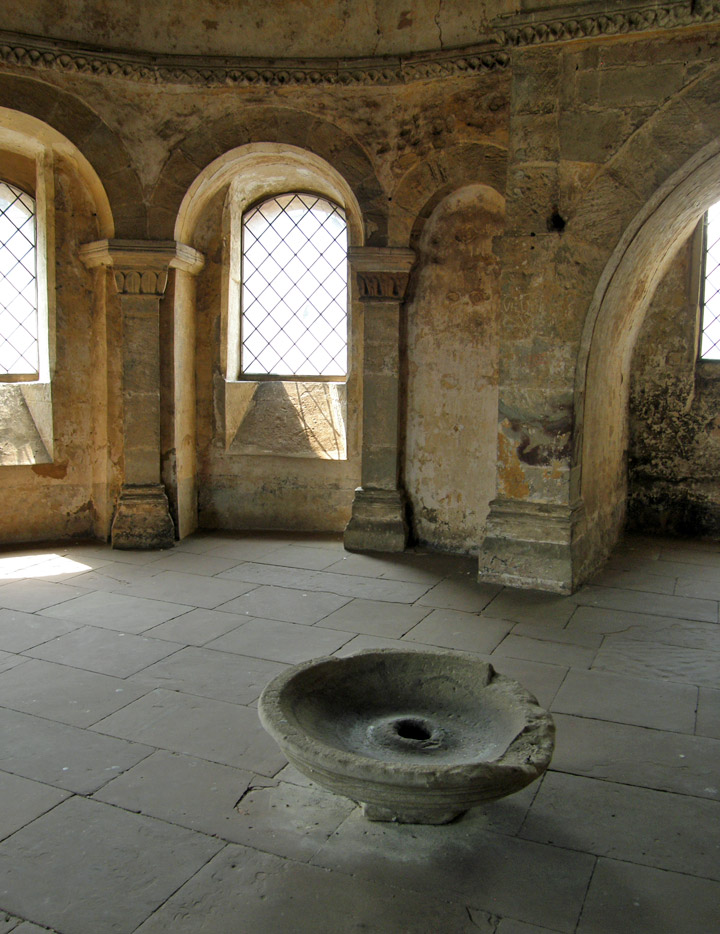
In 1986, the Porta Nigra was designated a World Heritage Site, along with other
Roman monuments in Trier and its surroundings.
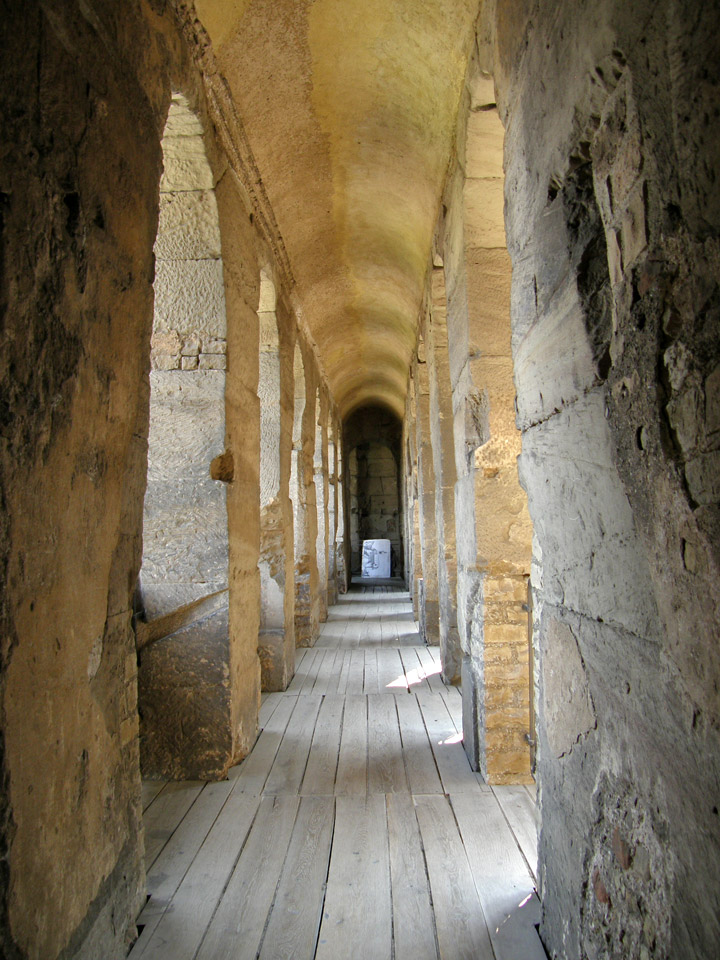
The modern appearance of the Porta Nigra goes back almost unchanged to the
reconstruction ordered by Napoleon. At the south side of the Porta Nigra,
remains of Roman columns line the last 100m of the street leading to the gate.
Positioned where they had stood in Roman times, they give a slight impression of
the aspect of the original Roman street that was lined with colonnades.

The gate is today closed for cars, but stands right next to one of the main
streets of Trier. In addition to the general pollution, the exhaust fumes of the
passing cars have been damaging the stones for decades. Generally, however, the
Porta Nigra is still in remarkable condition.

reinactor playing a Centurio
The Porta Nigra, including the upper
floors, is open to visitors. In summer, guided tours are also offered by an
actor dressed up as and portraying a Centurio (a Roman army officer) in full
armor.
Text from Wikipedia
Panels from the Church period
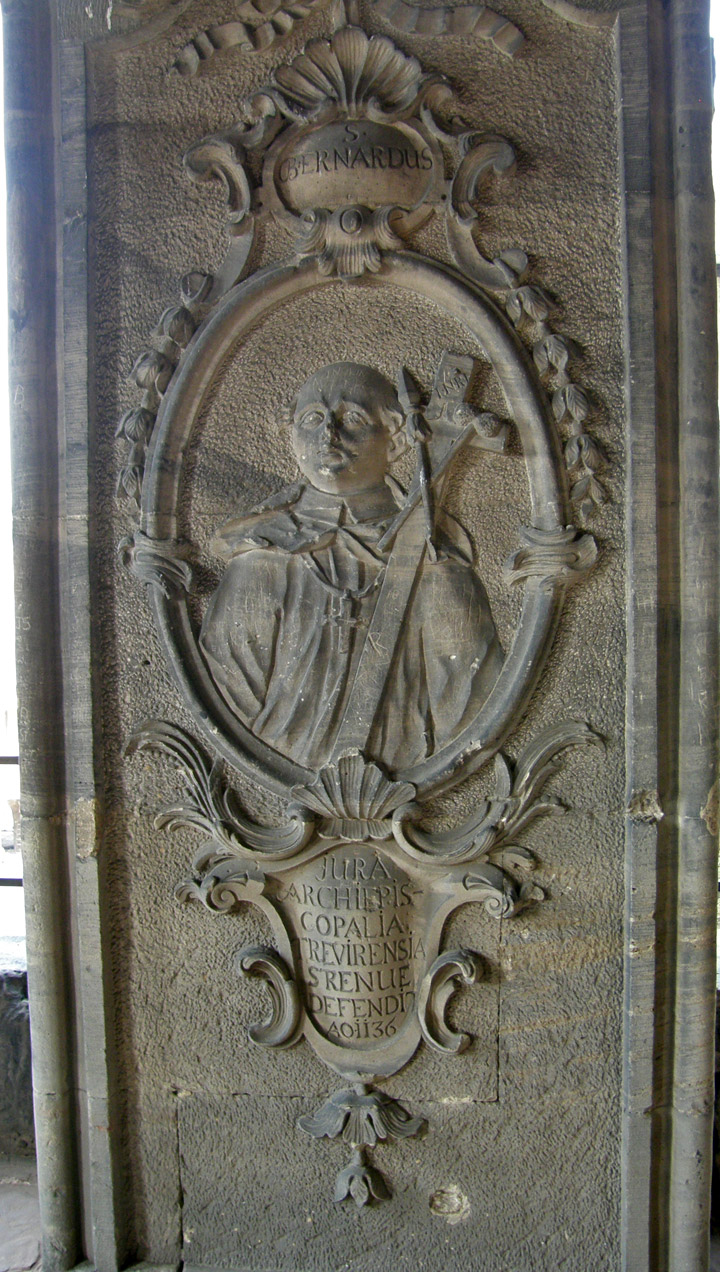
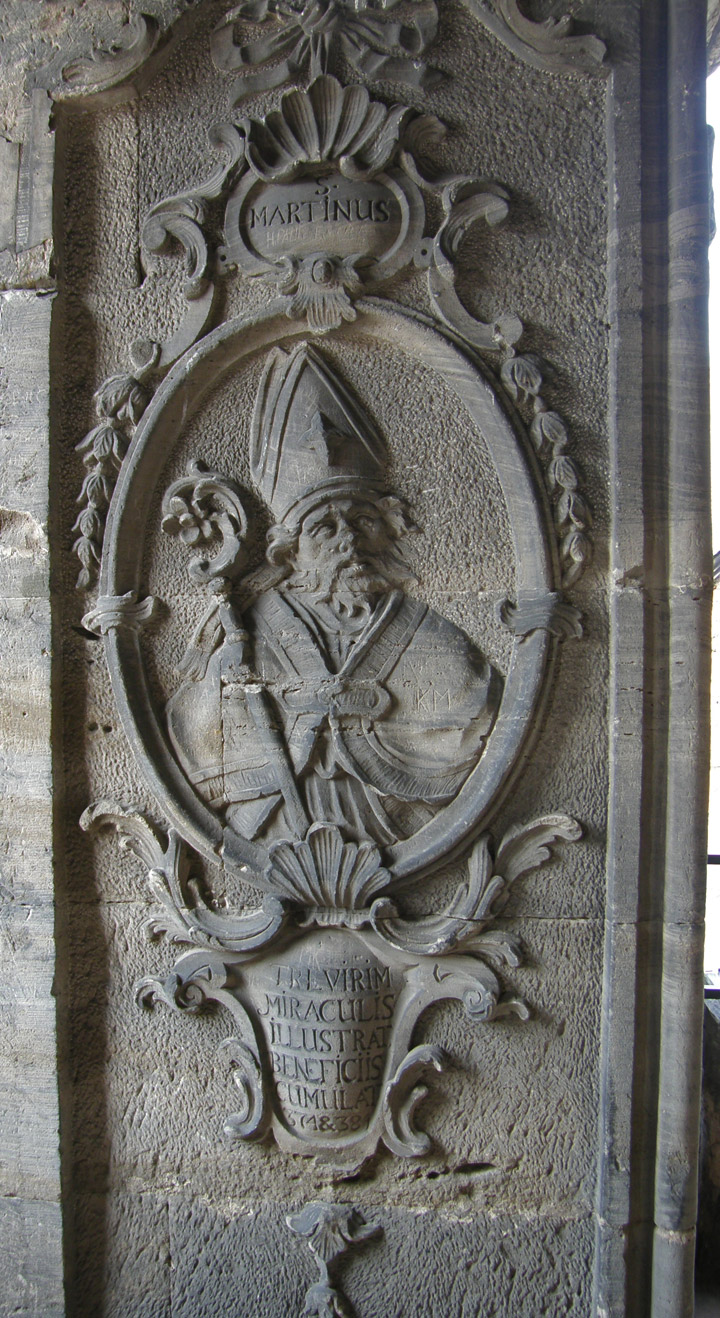
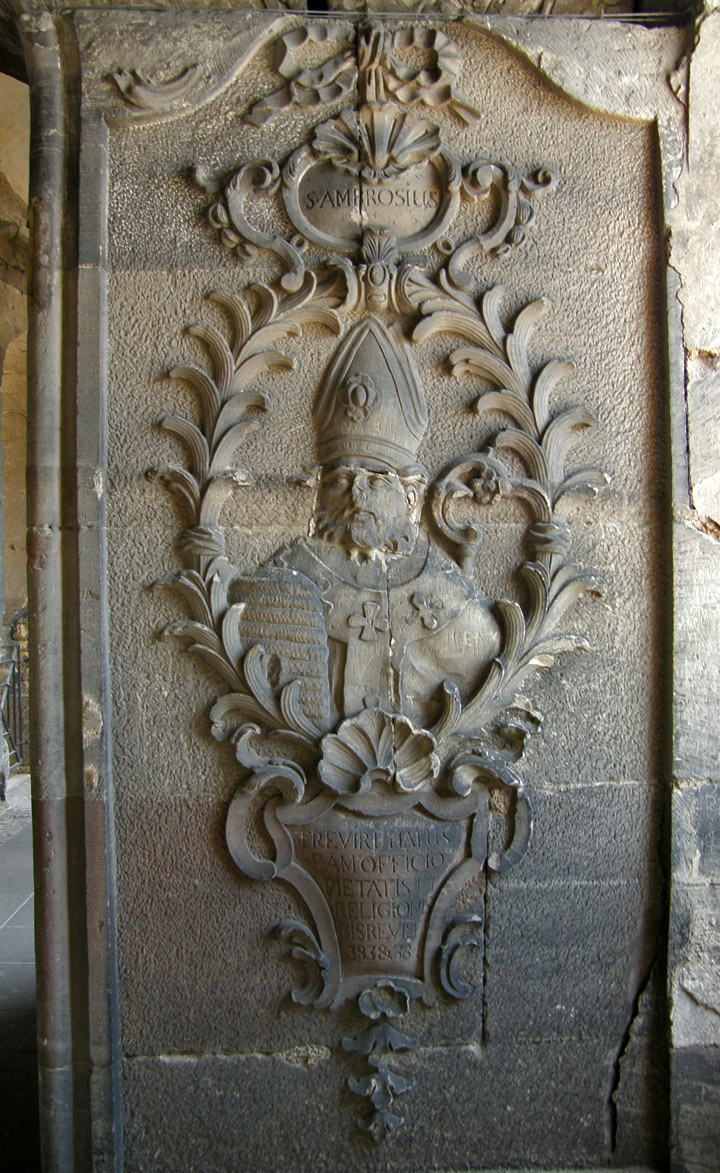
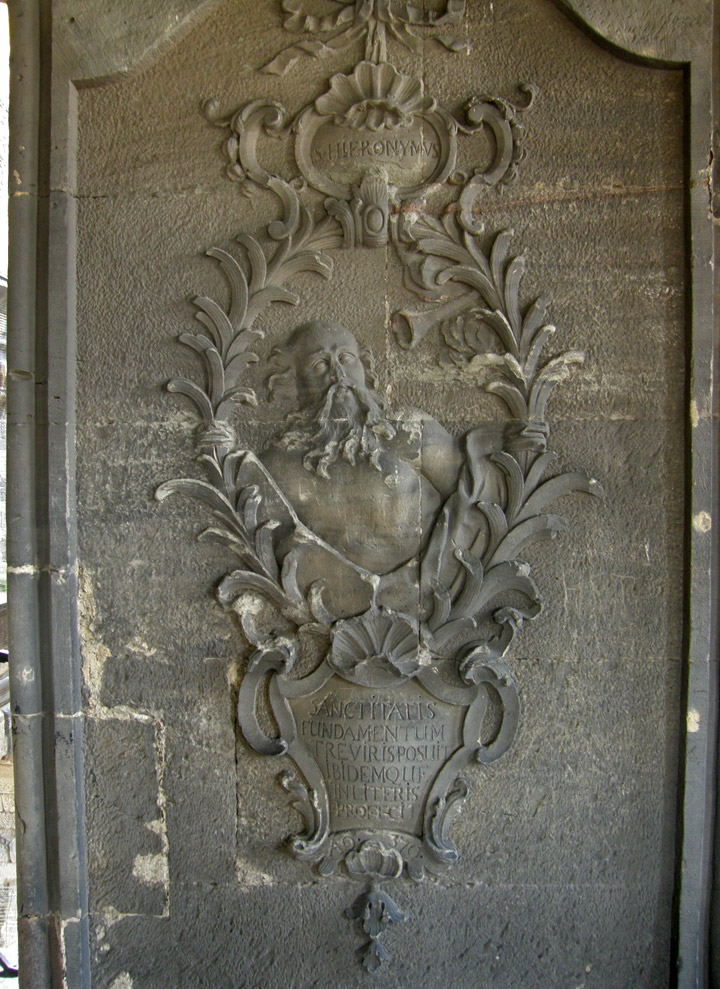
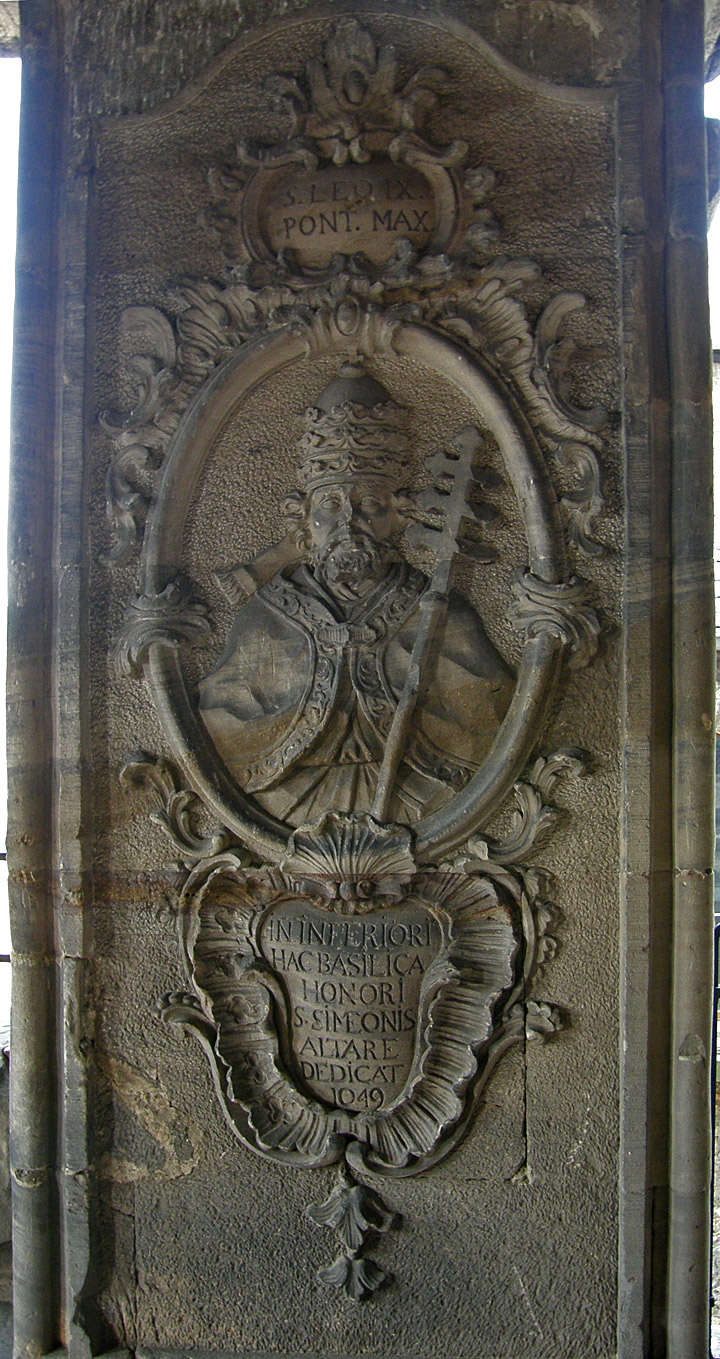

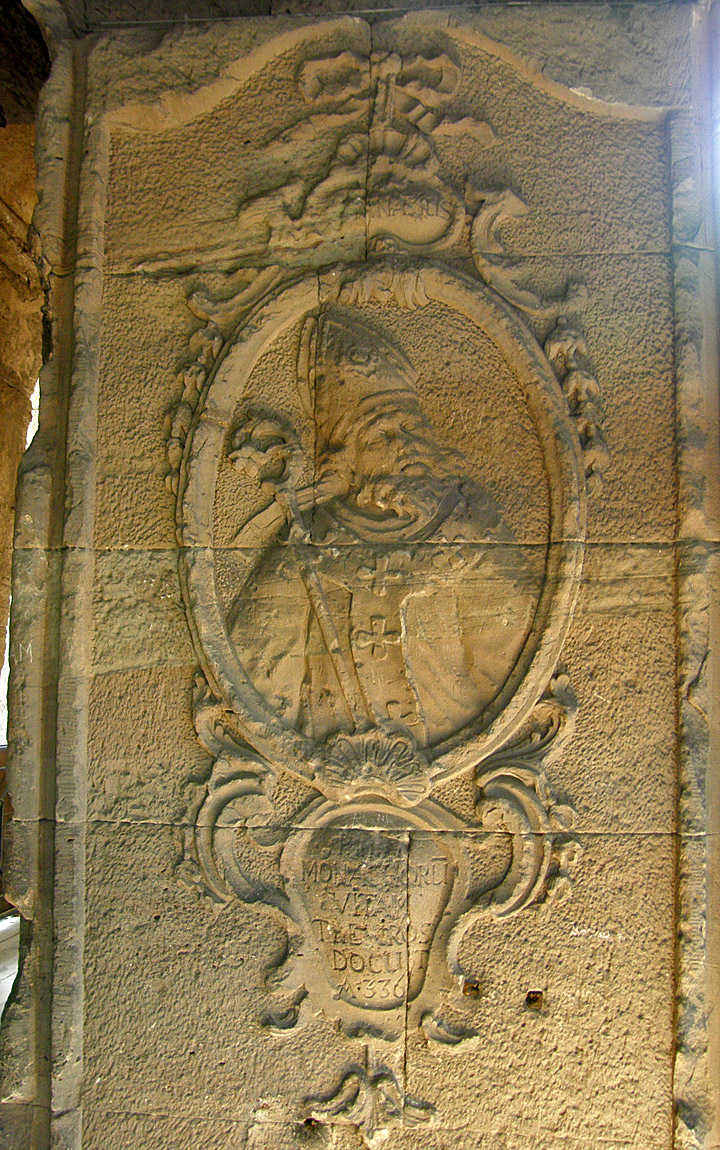
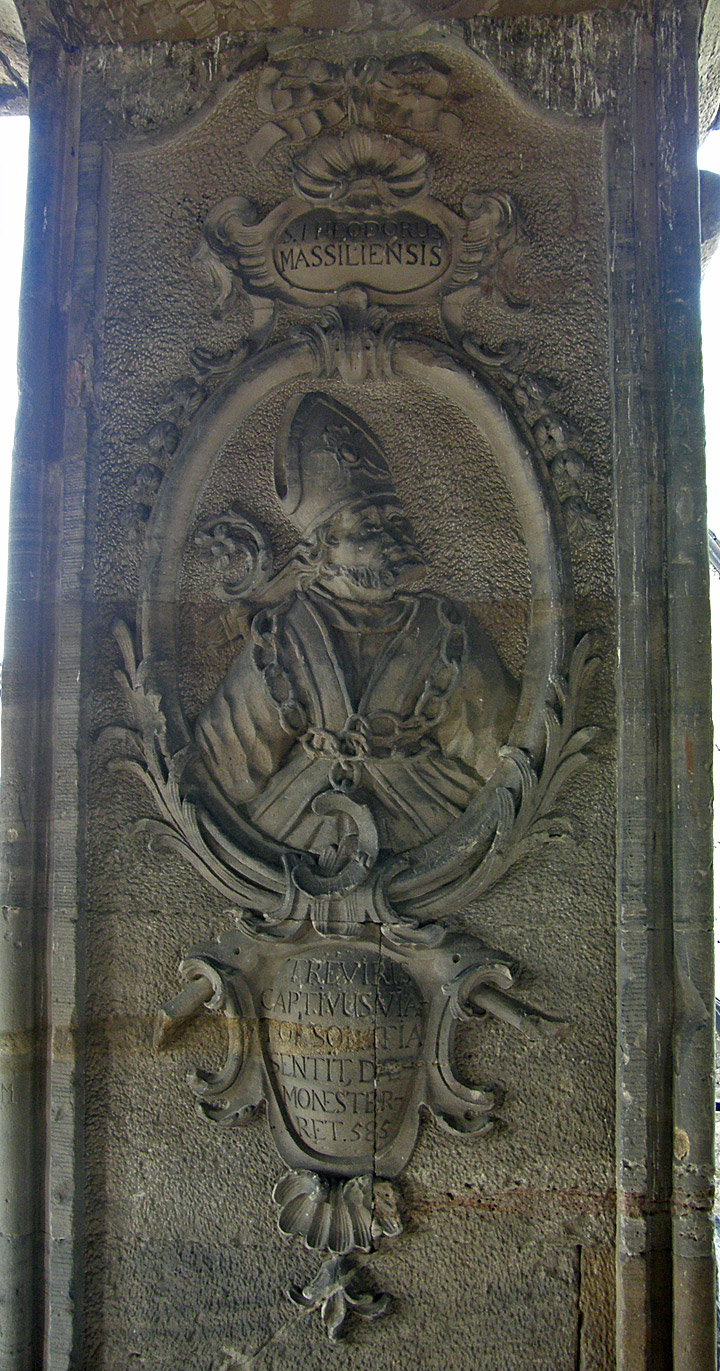
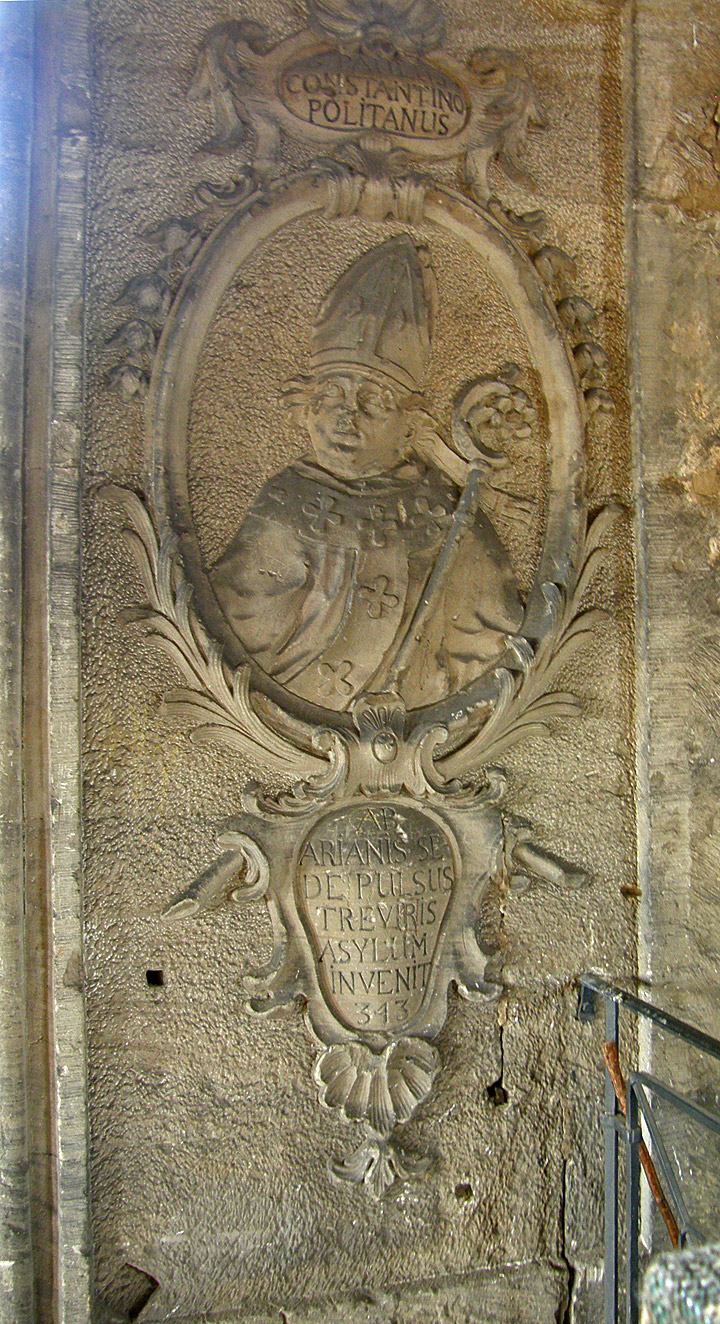
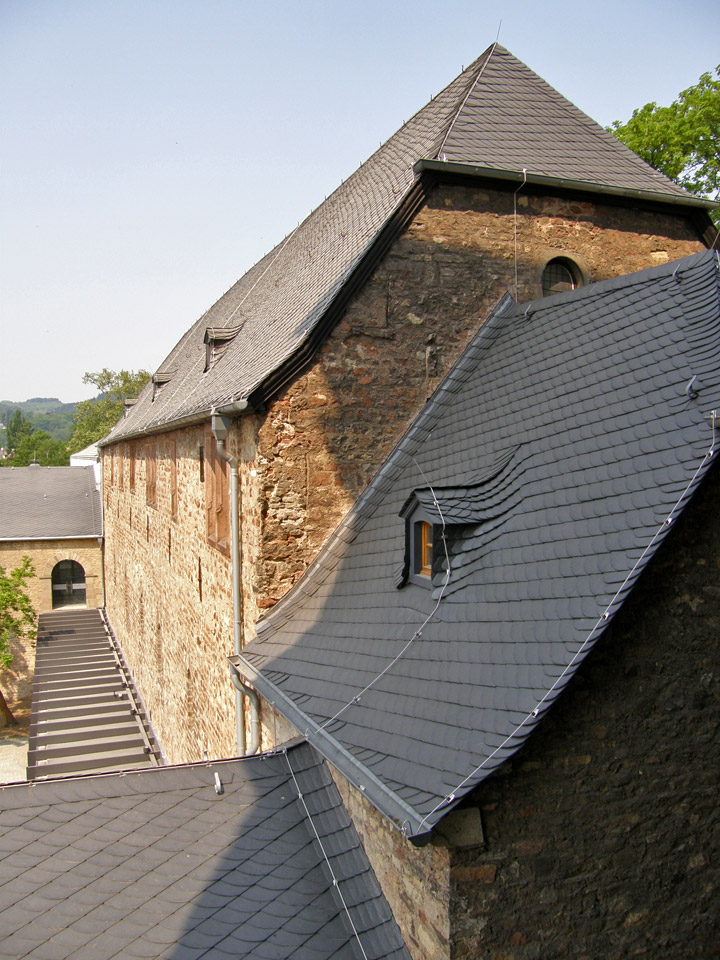
the monastery
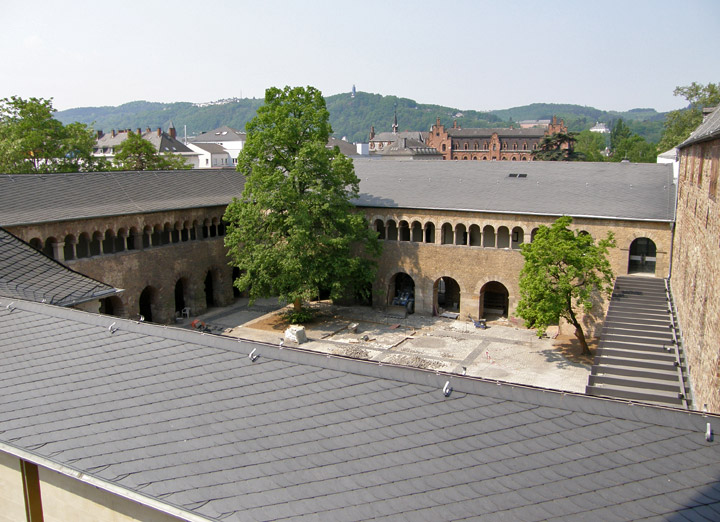
monastery courtyard
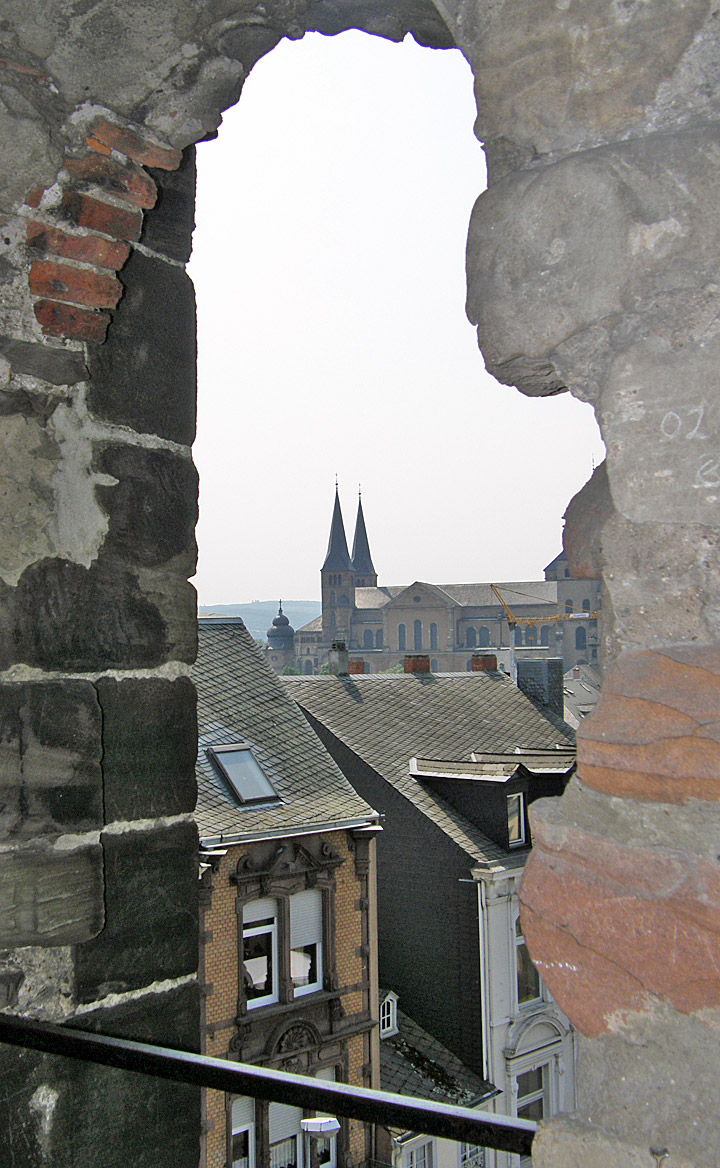
view of the town from the Porta Nigra
